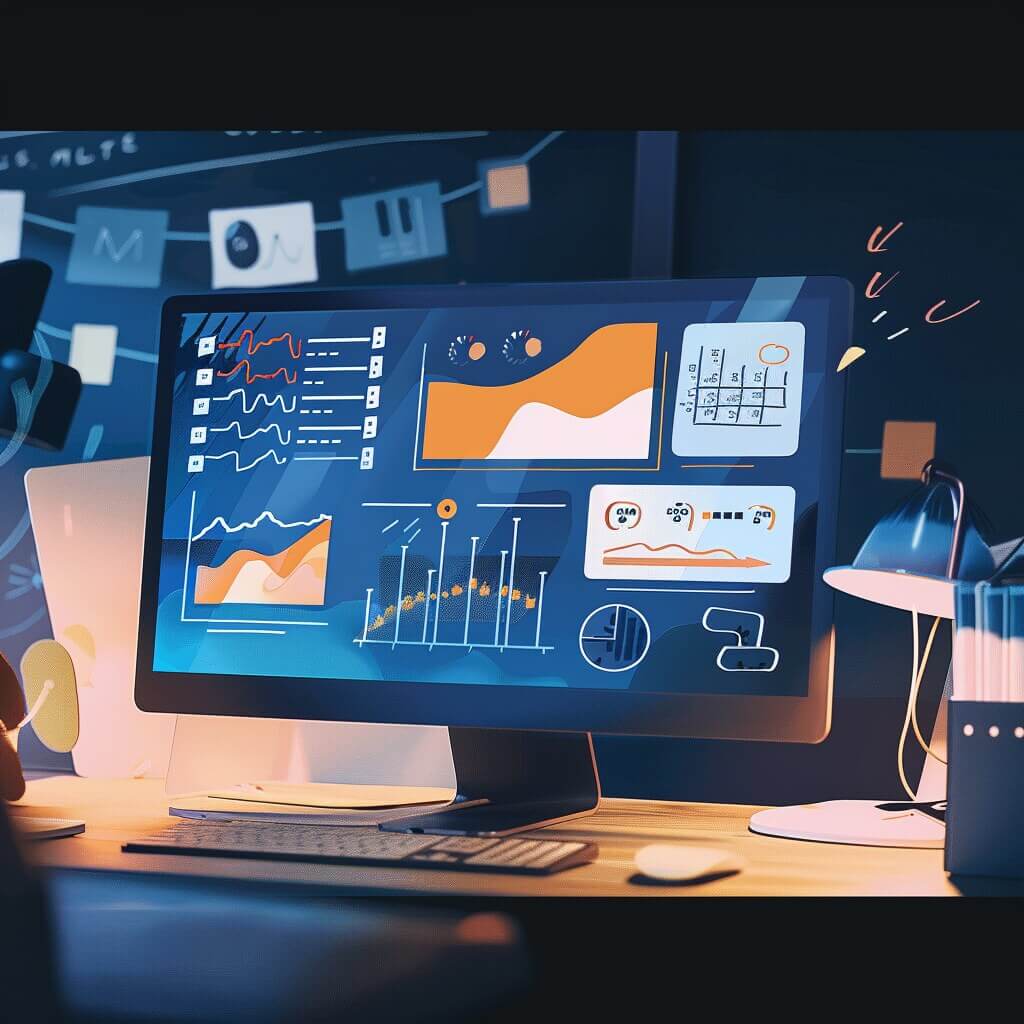Understanding enterprise-level security standards
Enterprise-level security standards are comprehensive guidelines and protocols organisations establish to safeguard their information systems, data, and resources from unauthorised access, breaches, and cyber threats. They are crucial because they protect your sensitive information and uphold your company’s reputation while maintaining customer trust and ensuring compliance with legal requirements. You just can’t afford to ignore these standards: a recent study from IBM and Ponemon Institute states that the average cost of a data breach is around 4 million dollars. So understanding how these standards work and following them is your only getaway ticket from these costs. Stay tuned as we dive deeper into the details.
The Role of Quality Assurance in Security
How does QA help with security? You know that Quality Assurance is not only about reporting bugs and informing devs about them; it carries much more weight than people might think. Sometimes, these quality checks might save your company from getting fined for a ridiculous amount of money. Here are some of these measures:
- Early Detection of Vulnerabilities: QA teams should participate in software project design and development phases, conducting thorough reviews and assessments. This way, they can identify security vulnerabilities and weaknesses early, helping with timely fixes before deployment.
- Comprehensive Testing: QA testers also conduct various types of security testing, including penetration testing, vulnerability scanning, and code analysis, to uncover potential security flaws and gaps. These tests simulate real-world attack scenarios and help identify vulnerabilities that malicious actors could exploit.
- Validation of Security Controls: QA ensures that security controls, including authentication mechanisms, access controls, encryption protocols, and input validation, are correctly implemented and function well. It helps you mitigate risks related to unauthorised access, data breaches, and other security threats.
- Adherence to Security Standards: Your QA teams should verify compliance with industry standards, best practices, and regulatory requirements, such as ISO 27001, NIST Cybersecurity Framework, and GDPR. These requirements ensure security policies, procedures, and guidelines.
- Continuous Monitoring: QA incorporates security monitoring and surveillance mechanisms into the software or system. It helps you detect and respond to real-time security incidents like monitoring for suspicious activities, unauthorised access attempts, and abnormal behaviour patterns that may indicate a security breach.
- Risk Management: QA also assesses and prioritises security risks based on their severity and potential impact on your organisation. They collaborate with stakeholders to develop risk mitigation strategies and contingency plans to minimise the likelihood and impact of security breaches.
See the importance of QA in security measures? Let’s say, in the best-case scenario, your team handles all of these measures. Do you know what else you need for speed and efficiency? A powerful QA management solution that will empower you to follow these requirements and streamline your work end-to-end.
aqua, an AI-powered Test Management System (TMS), ensures you can effectively manage security throughout the software development lifecycle by providing robust tools and features. With aqua, you can seamlessly monitor your QA processes, facilitating early detection of vulnerabilities. Additionally, aqua’s adherence to industry standards and regulatory requirements, such as SOC2, DORA, ISO 27001 and GDPR, ensures that security policies and procedures align with best practices. With continuous monitoring, aqua helps you detect and respond to security incidents in real-time, minimising the impact of breaches. That’s not it: with aqua, you can access modern features like AI-powered test case and requirements management, 100% traceability, and an advanced bug-tracking solution, Capture. If you are in heavily regulated industries like banking, insurance or government then aqua is your go-to solution! Drop all your security concerns and try the most comprehensive QA solution in the market.
Increase testing productivity by 50% without compromising security in heavily regulated industries
Best practices for implementing security standards in QA
Implementing security standards in QA is crucial for ensuring the integrity, confidentiality, and availability of your software systems and data. So, how do you maximise them? What practices can you implement to ensure these enterprise standards we have been talking about? By following the guidelines below, you will mitigate security risks, comply with regulatory requirements, and build trust with customers and stakeholders:
1. Establish Clear Security Policies and Procedures:
- Define and document clear security policies and procedures that outline roles, responsibilities, and expectations for all stakeholders involved in the QA process.
- Communicate these policies and procedures effectively with your teams and stakeholders to ensure understanding and adherence across the organisation.
- Regularly review and update security policies to align with evolving threats, technologies, and regulatory requirements.
2. Provide Ongoing Security Training and Awareness:
- Offer comprehensive security training programs to educate QA teams and other personnel on security best practices, threat awareness, and compliance requirements.
- Foster a culture of security awareness by promoting regular security reminders, newsletters, and training sessions.
- Encourage active participation and employee feedback to improve security awareness and practices continuously.
Before we move on with our list, let’s try something out. Are you curious about your company’s real security risk and what those compliance gaps might actually cost you? Our interactive risk calculator below lets you adjust your industry, company size, and security parameters to see personalised breach costs, compliance fines, and ROI calculations – it’s like having a security consultant right in your browser.
🛡️ Interactive Compliance Risk Calculator & Assessment Matrix (Click to open)
Risk Assessment Parameters
Risk Assessment Results
Financial Impact Analysis
Risk Heat Map
🎯 Personalized Recommendations
3. Deploy Robust Security Testing Methods:
- Conduct comprehensive security testing, including penetration testing, vulnerability scanning, and fuzz testing, to identify and address security weaknesses.
- Use a mix of automated and manual testing techniques to cover the security scenarios and attack vectors you have identified.
- Incorporate security testing into the QA process iteratively, ensuring that security is continuously evaluated and improved with each release.
4. Conduct Access Control and Data Protection Measures:
- Implement strong access control mechanisms to restrict access to sensitive systems and data based on the principle of least privilege.
- Encrypt sensitive data at rest and in transit using industry-standard encryption algorithms and protocols.
- Regularly audit and monitor access logs to detect and respond to unauthorised access attempts and potential security breaches.
5. Maintain Compliance with Regulatory Standards:
- Stay informed about relevant regulatory standards and requirements that apply to your industry and geographic region, such as ISO 27001, SOC2, DORA, GDPR, HIPAA, and PCI DSS.
- Establish processes and controls to ensure compliance with these standards, including regular audits, risk assessments, and documentation of security practices.
- Engage with legal and compliance experts to interpret and implement regulatory requirements effectively within your QA processes.

By following these guidelines, you will ensure you have the highest security standards, not allowing any surprises of data breaches or compliance violations.
“If everyone considers compliance standards just another part of the job, it doesn't take much time or energy. I have however worked at places where many people did not care about our compliance because it was "someone else's problem", which meant that QA spent 25% of their time handling compliance issues until we found the right internal influencers to help bring about our changes.”
Challenges and solutions for meeting high enterprise compliance standards
As mentioned before, the stakes are high in an enterprise. Demands are always evolving and becoming harder to fulfil. For this reason, you must understand the main challenges you’ll face in maintaining these standards. Don’t be worried, we don’t only provide you with the most likely challenges but also their solutions:
1. Challenge: Evolving Regulatory Requirements
- Why it occurs: Regulatory requirements are not static; they evolve in response to emerging threats, technological advancements, and changes in the business environment. You must continuously monitor and adapt to these changes to ensure ongoing compliance.
- Solution: Establish a dedicated or cross-functional compliance team that monitors regulatory changes, conducts regular risk assessments, and updates policies and procedures accordingly. By following regulatory updates and proactively adjusting compliance strategies, you can stay ahead of evolving requirements and maintain compliance effectively.
2. Challenge: Resource Constraints
- Why it occurs: You often face resource constraints, including limited budgets, staff shortages, and competing priorities. This makes allocating sufficient resources to compliance efforts challenging, resulting in gaps in compliance management.
- Solution: Implement automation tools for compliance tasks such as risk assessments, policy management, and audit trail tracking to optimise resource utilisation and reduce manual efforts. Automation helps streamline compliance processes, freeing up resources for more strategic activities and ensuring consistent and efficient compliance management despite resource constraints.
3. Challenge: Lack of Awareness and Training
- Why it occurs: Compliance requires active participation and understanding from all employees, yet many organisations struggle with low awareness levels and inadequate training programs. Without proper education and training, employees may inadvertently violate compliance policies or fail to recognise and report compliance-related issues.
- Solution: Deliver comprehensive training to employees on compliance policies, procedures, and best practices, fostering a culture of compliance throughout the organisation. Regular training sessions, online courses, and awareness campaigns can help educate employees about their compliance responsibilities and empower them to contribute to compliance efforts effectively.
4. Challenge: Cost Management
- Why it occurs: Achieving and maintaining compliance can incur significant costs, including investments in technology, staff training, external audits, and ongoing monitoring and reporting activities. Limited budgets and cost constraints may hinder organizations’ ability to implement robust and fully compliant compliance measures.
- Solution: Conduct cost-benefit analyses to prioritise compliance initiatives and allocate resources effectively, focusing on areas with the highest impact on risk mitigation and regulatory adherence. By strategically allocating resources and prioritising compliance efforts based on their potential impact and cost-effectiveness, you can optimise compliance investments and achieve maximum value within budget constraints.
Looking for a solution to help you deal with the challenges of managing security and compliance in heavily regulated industries? Say no more—aqua has you covered.
With aqua, you’ll meet all the tricky enterprise-level compliance standards effortlessly. With aqua, you get robust features tailored to regulate industries’ needs. Not only that, aqua also delivers AI-powered features that will help you manage your testing process lightning-fast with its AI Copilot. Its fresh and modern bug-tracking, test case and requirements management capabilities will make aqua your ultimate solution. aqua’s adherence to industry standards and regulatory requirements, such as SOC2, DORA, ISO 27001 and GDPR, ensures security policies and procedures align with best practices, easing compliance burdens. aqua helps you detect and respond to security incidents in real-time. Whether in banking, insurance, or government sectors, aqua is the most comprehensive QA solution in the market, offering your enterprise peace of mind and unparalleled security.
Instantly elevate testing efficiency by 70% with enterprise-level futuristic TMS
Conclusion
Managing security and compliance in heavily regulated industries can be a huge challenge if you are not using a comprehensive solution to address it. You can mitigate risks and maintain compliance effectively by addressing vulnerabilities early, adhering to industry standards, and continuously monitoring for security incidents. As your enterprise strives to meet the highest standards of security and compliance, partnering with a trusted solution like aqua can provide the necessary tools and support to navigate this complex landscape confidently. The question is this: are you ready to invest in your peace of mind?


















